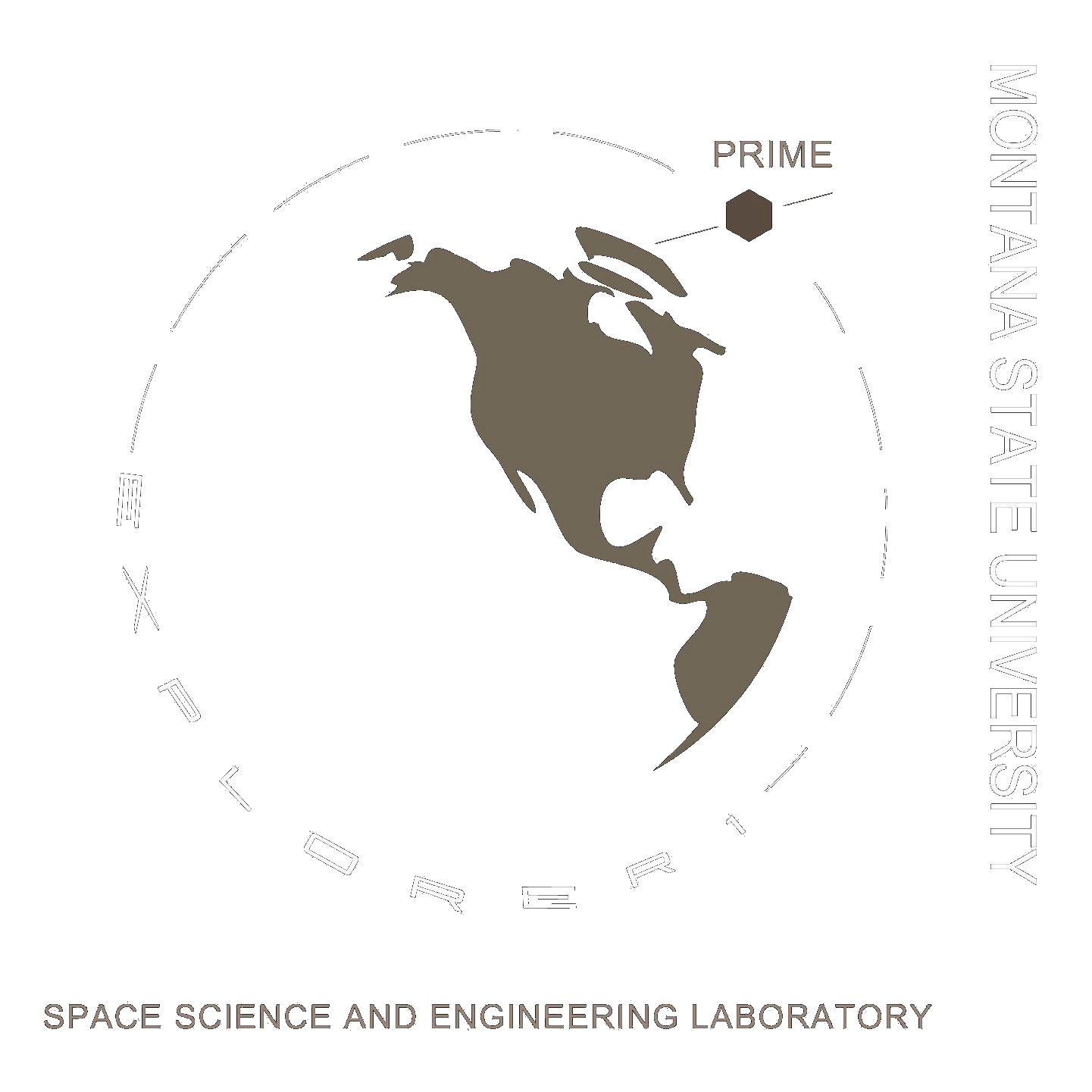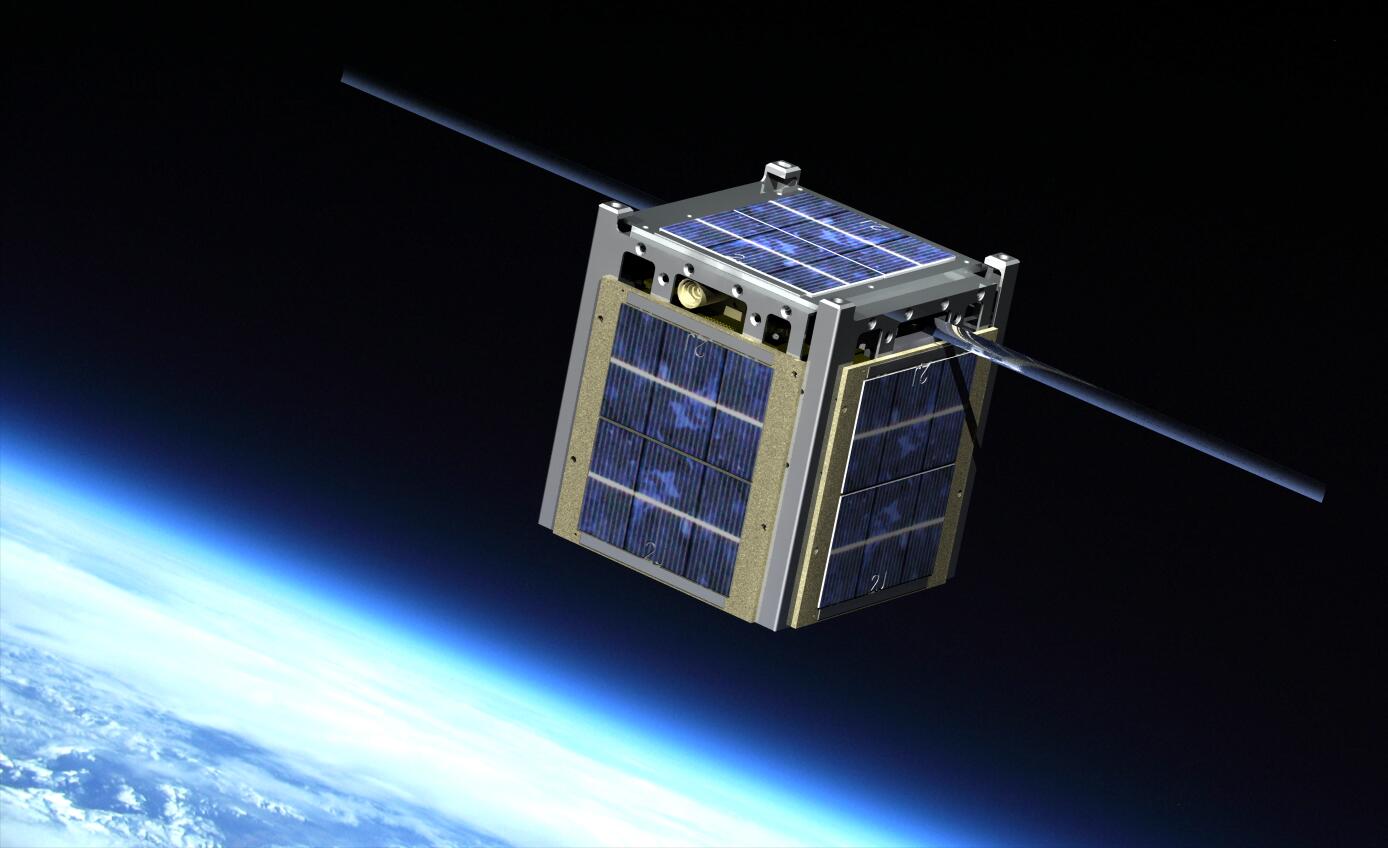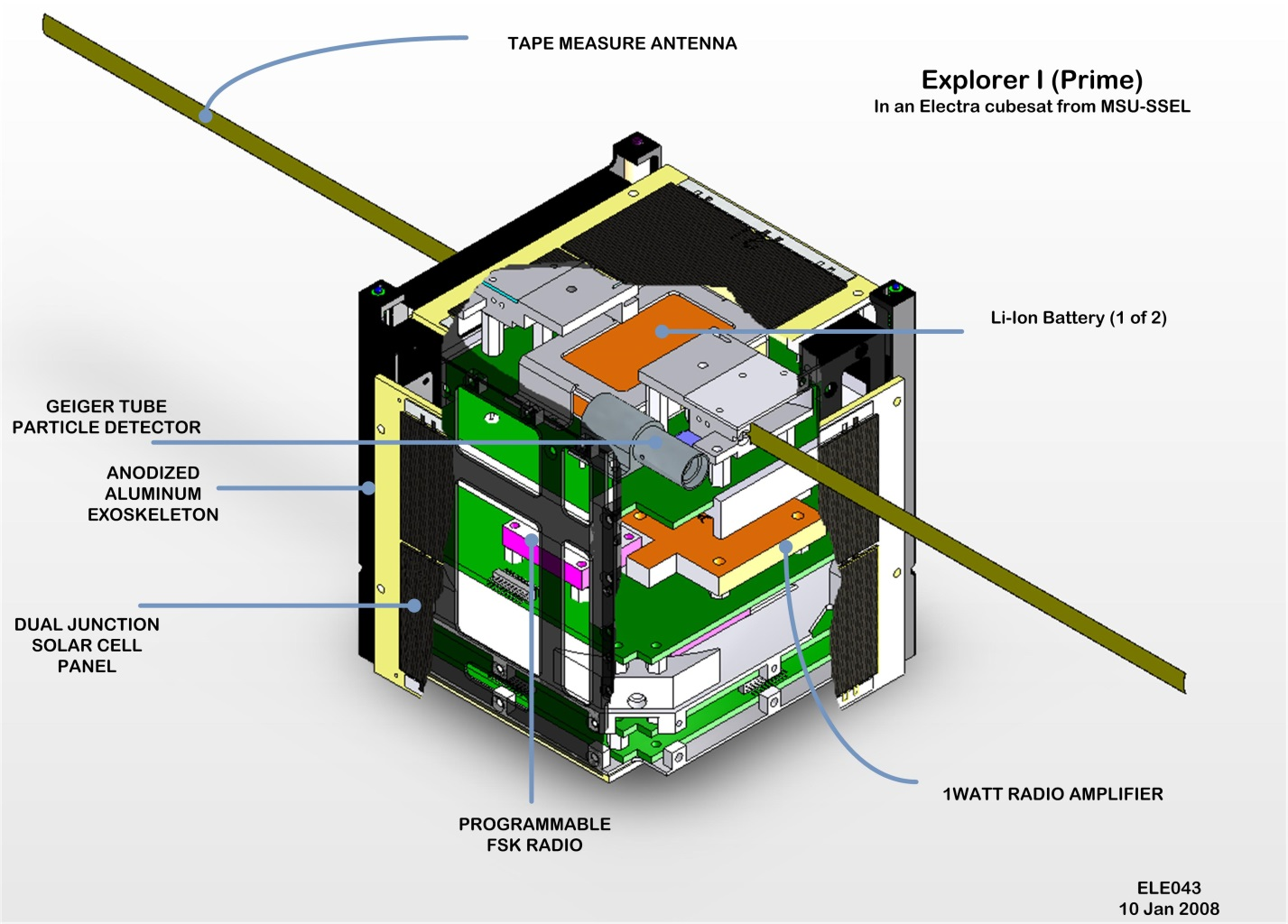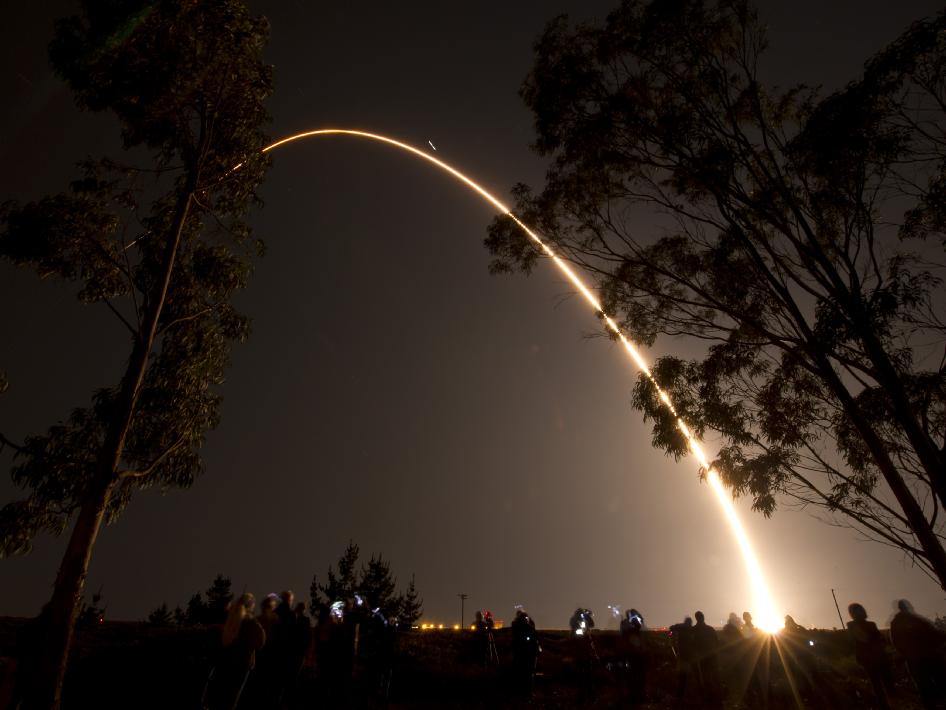HRBE - E1P
Hiscock Radiation Belt Explorer - Explorer-1 [PRIME]


Mission Overview
The Hiscock Radiation Belt Explorer (HRBE), named in honor of Dr. William A. Hiscock, founder of the Montana Space Grant Consortium, launched from Vandenberg Airforce Base in California on October 28, 2011. Formerly known as Explorer-1 [PRIME] (E1P), the Cubesat-class satellite was developed in the Space Science and Engineering Laboratory (SSEL) at Montana State University.
HRBE's mission was to detect and characterize the Van Allen radiation belts in honor of the 50th anniversary of Explorer-1, America's first satellite. Explorer-1 first discovered the cloud of highly energetic electrons trapped in the Earth's magnetic field. HRBE carried a miniature Geiger tube donated by Dr. Van Allen to measure the intensity and variability of these electrons from low earth orbit.
Spacecraft Overview
 Cutaway rendering of E1P.
Cutaway rendering of E1P.
HRBE was a 1U CubeSat that was designed and built by SSEL students at Montana State University. This 10x10x10 cm cube had an aluminium structure with 2 solar cells on each side for power generation. The spacecraft bus consisted of a Command and Data Handling (CDH) board for controlling the flow of data throughout the satellite; an Electrical Power System (EPS) for regulating power from the solar panels and charging the batteries; a UHF transceiver for sending and receiving data to and from the ground; and a passive Attitude Control System (ACS). The payload was a small Geiger Müller tube which detected energetic particles trapped in Earth’s magnetic field.
Status
Explore-1 [Prime] Flight Unit 1 was launched as a secondary payload with NASA’s Glory satellite on March 4, 2011 as part of the ELaNa-I mission. Unfortunately, during launch the Taurus XL rocket’s payload fairing failed to separate on schedule leaving the vehicle unable to achieve orbit due to its excess mass. E1P Flight Unit 1, along with several other university CubeSats were deployed from the launch vehicle, but fell back to Earth soon after.
Explore-1 [Prime] Flight Unit 2 was launched as a secondary payload with NOAA’s NPP satellite on October 28, 2011 as part of the ELaNa-III mission. HAM operators around the world, as well as SSEL’s K7MSU ground station, were able to decode E1P Flight Unit 2’s beacon soon after launch. Following the launch, E1P Flight Unit 2 was renamed the Hiscock Radiation Belt Explorer (HRBE) in honor of Dr. William A. Hiscock, founder of the Montana Space Grant Consortium.
M-Cubed, another satellite released at the same time as HRBE, reported uplink difficulties and anamolous behavior in the downlinked data. The satellite's developer, Michigan Exploration Laboratory (MXL), concluded that M-Cubed had become magnetically coupled to HRBE. This event is considered the first instance of two satellites unintentionally and non-destructively latching together. As a result M-Cubed was unable to complete its mission; however, HRBE continued to operate as expected.
For more information on HRBE (E1P) and M-Cubed refer to the Wikipedia page.

Launch arc from the Delta II carrying E1P Flight Unit 2. Image Credit: NASA/Bill Ingalls
It was quickly discovered that SSEL could not command HRBE, due to the width of the front-end receiver and possibly the addition of the M-Cubed satellite. To compensate for the wide front end, the ground station was upgraded to include a 1.5-kW UHF amplifier in January 2012. The increase in power restored commanding and showed that the coupling of HRBE and M-Cubed had had no detrimental effects on HRBE.
SSEL halted commanding of HRBE circa 2015, having upgraded the ground station for the FIREBIRD, FIREBIRD II, and IT-SPINS missions. Not too long after, HRBE's battery failed preventing any further science operations.
SSEL was contacted in June 2024 by a member of the amatuer radio community from Germany who had received beacons from HRBE. The member provided data they captured and SSEL was able to decode the beacons. The data showed that HRBE was able to successfully boot one final time with power drawn from the solar panels. HRBE and its unintended payload, M-Cubed, re-entered on June 30, 2024.
